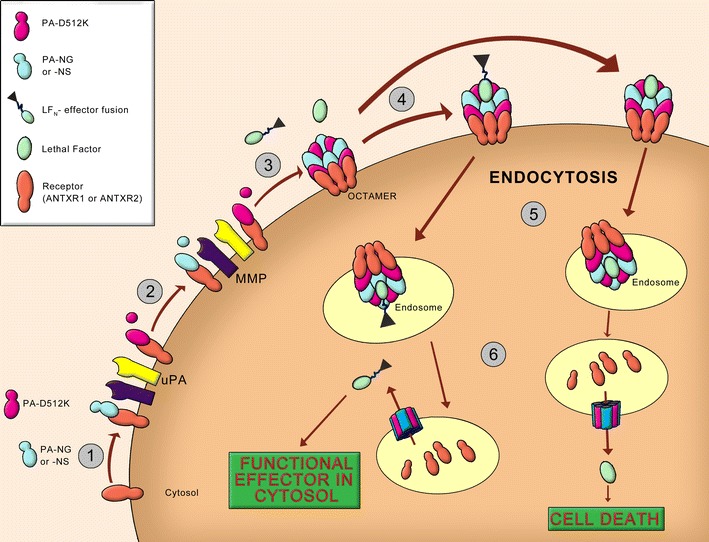Fig. 5.

Conditionally bispecific intoxication of cells by engineered anthrax toxin targeted at two ECM proteases: uPA and MMP. Shown is the implementation as reported by Phillips et al. (84). (1) Anthrax protective antigen (PA) recognizes the two receptors ANTXR1 and ANTXR2. Wildtype PA undergoes proteolytic cleavage by furin to a 63-kDa truncated form (PA63) that self-associates in the receptor-bound state. Two variants of protective antigen (PA) were engineered to redirect wildtype PA’s specificity for furin to uPA (2) and MMP (3). (4) Oligomeric PA63 (pre-pore) binds lethal factor (LF) or engineered fusions of its N-terminal domain (LF N) with a cargo effector. (5) The complex is internalized into endosomes. (6) Acidification within the endosomes triggers a transition of the pre-pore to a pore that translocates LF or the LFN-based fusion into the cytosol. Wildtype LF leads to cell death by activating the mitogen-activated protein kinase kinase (MAP2K) pathway. An alternative cytotoxin is a LFN conjugate with Pseudomonas exotoxin A (FP59) that induces apoptosis through inhibition of protein synthesis (72)
